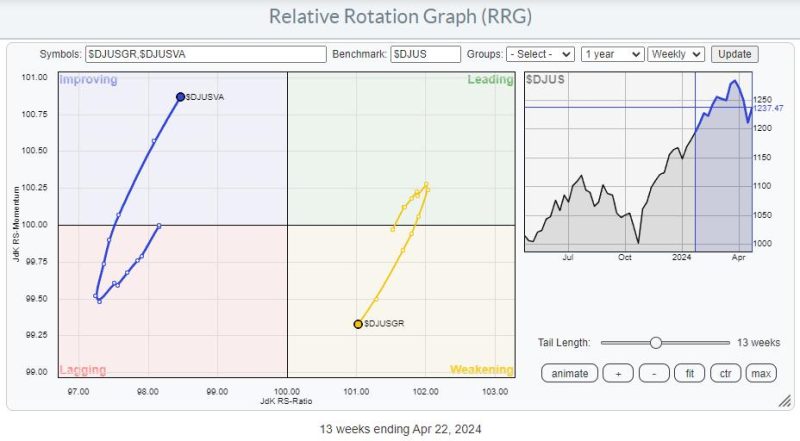1. Shift in Market Dynamics:
The recent surge in value stocks marks a significant shift in market dynamics. Traditionally, growth stocks have outperformed value stocks, but the tide seems to be turning. Investors are embracing value stocks for their stability and long-term growth potential, leading to a reevaluation of investment strategies.
2. Impact on Investment Strategies:
The rise of value stocks has prompted many investors to reassess their investment strategies. With the increased focus on value stocks, there is a need to diversify portfolios and incorporate these assets to mitigate downside risk. Investors are now seeking a balance between growth and value securities to enhance their investment returns.
3. Volatility and Uncertainty:
Although value stocks are considered less volatile than growth stocks, they are not immune to market fluctuations. The increased interest in value stocks has led to heightened volatility in the market, creating a sense of uncertainty among investors. It is crucial for investors to remain diversified and stay vigilant in monitoring market trends to navigate potential risks effectively.
4. Inflation Concerns:
One of the downside risks associated with the shift to value stocks is the concern over inflation. Value stocks, typically found in sectors like banking, energy, and utilities, may be vulnerable to rising inflation rates that could erode their returns. Investors need to carefully assess the impact of inflation on their value holdings and adjust their portfolios accordingly.
5. Sector-Specific Challenges:
Certain sectors within the value category may face unique challenges that could impact investment performance. For example, value stocks in the energy sector are sensitive to fluctuations in oil prices, while financial services may be impacted by regulatory changes and interest rate movements. Investors must conduct thorough sector analysis to identify potential risks and opportunities within the value space.
6. Market Sentiment and Behavioral Biases:
The growing popularity of value stocks may also be influenced by market sentiment and behavioral biases. Investors tend to follow the crowd and may overlook potential downside risks associated with the herd mentality. It is essential for investors to conduct independent research and make informed decisions based on their financial goals and risk tolerance, rather than following the latest market trends.
7. Long-Term Performance vs. Short-Term Volatility:
While value stocks are known for their long-term performance potential, they may exhibit short-term volatility that could test investor patience. The key is to maintain a long-term perspective and focus on the fundamentals of value investing, such as buying undervalued assets with strong growth prospects. By staying committed to the value investment strategy, investors can weather short-term market fluctuations and benefit from the upside potential of value stocks.
8. Risk Management Strategies:
To mitigate downside risks associated with the shift to value stocks, investors should implement robust risk management strategies. This includes maintaining a diversified portfolio, setting clear investment objectives, and regularly reviewing and rebalancing asset allocations. By adopting a disciplined approach to risk management, investors can protect their portfolios from potential market downturns and achieve their long-term financial goals.
9. Opportunity for Value Investors:
Despite the downside risks associated with the shift to value stocks, there are ample opportunities for value investors to capitalize on undervalued assets and outperform the market. By conducting in-depth research, identifying high-quality value stocks, and staying disciplined in their investment approach, value investors can navigate market challenges and generate attractive returns over the long term.
10. Conclusion:
The rise of value stocks presents both opportunities and challenges for investors. While value stocks offer stability and long-term growth potential, they are not without downside risks, such as market volatility, inflation concerns, and sector-specific challenges. By adopting a strategic and disciplined approach to value investing, investors can effectively manage risks, capitalize on opportunities, and achieve their financial objectives in the evolving market landscape.




























